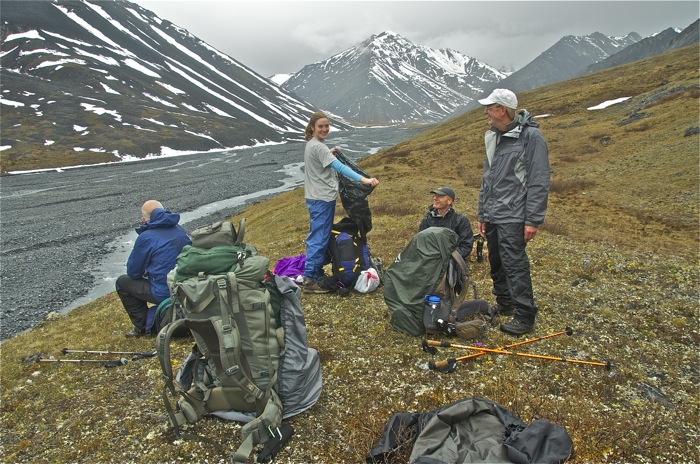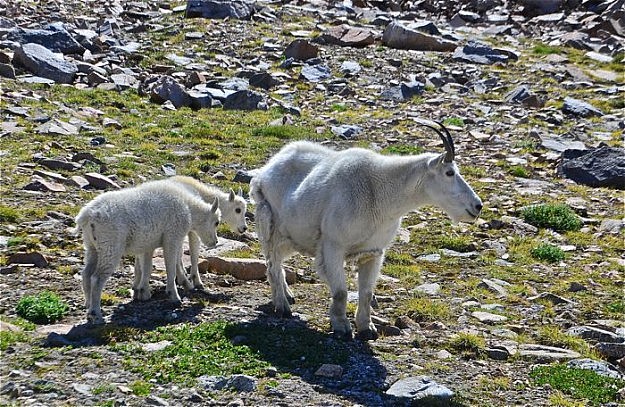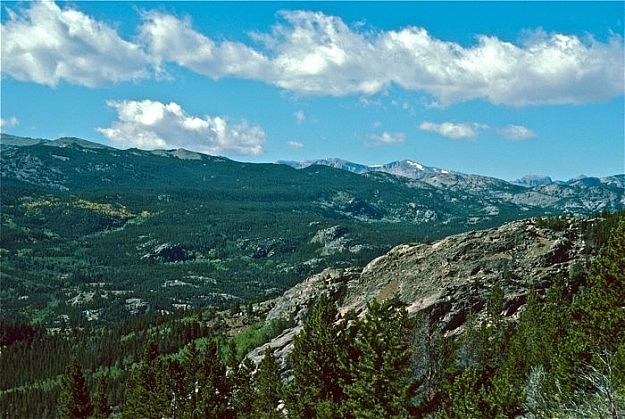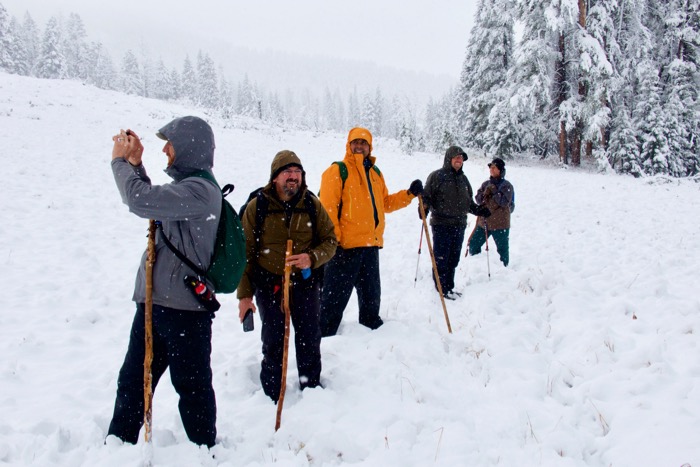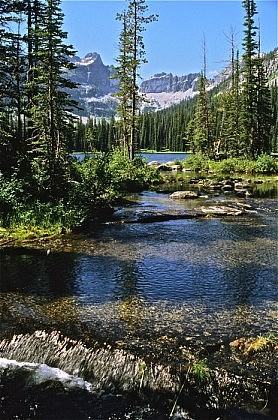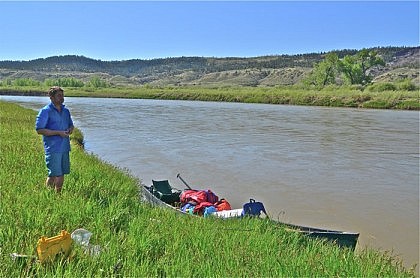 At Big Wild, we take safety seriously, and our safety record is simply unsurpassed in the industry. Since our founding in 1978, we’ve had zero deaths and zero emergency client evacuations. Part of this is certainly good luck, yes, but our vast reservoir of experience, training and attention to detail also plays a major role.
At Big Wild, we take safety seriously, and our safety record is simply unsurpassed in the industry. Since our founding in 1978, we’ve had zero deaths and zero emergency client evacuations. Part of this is certainly good luck, yes, but our vast reservoir of experience, training and attention to detail also plays a major role.
Wilderness Travel is relatively safe, especially when travelling afoot, with no dangerous horses or mules or river rapids to negotiate. After all, we humans evolved in the wilderness, walking and running upright on two feet. Wilderness trekking/backpacking is, therefore, a very basic and natural activity. Nonetheless, when you’re in the wilds, help is never right around the corner. In this day and age in which so many people expect instant fixes for most any problem, wilderness travel is a throwback to a simpler time, a time when human beings paid attention to their surroundings because their lives depended upon that.
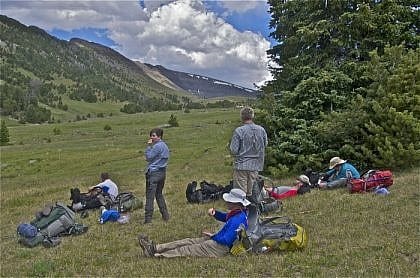 Safety in the big wilds is no accident. Our guides are trained in first aid, CPR, and search and rescue. All of our guides have Wilderness First Responder training. And because nobody in the industry can match our levels of experience, we’ve learned over the years to anticipate most problems before they occur. That’s a big part of client safety.
Safety in the big wilds is no accident. Our guides are trained in first aid, CPR, and search and rescue. All of our guides have Wilderness First Responder training. And because nobody in the industry can match our levels of experience, we’ve learned over the years to anticipate most problems before they occur. That’s a big part of client safety.
All guides carry an appropriate emergency communication device, either a satellite phone or a cell phone, depending upon the situation and the area.
All guides also carry a comprehensive first-aid kit.
Our clothing/equipment list begins your commitment to safety. When you sign up for a trek, we will send you our comprehensive list of what to bring. This list is also on our website. By bringing everything on the list and no more, you will be certain to have the proper clothing and other items needed to help insure your safety, without being weighed-down by unnecessary ballast.
Physical Fitness is another aspect of our client’s commitment to safety. A fit hiker is a safer hiker.
Our guides conduct a thorough orientation and safety talk when we meet our clients the night before the trip begins. It is important for folks to pay close attention to the safety talk. Safety on a Big Wild Adventure is a joint venture between our staff and our clients. The safety talk is an important first step toward a safe and fulfilling journey! Below is a brief overview of what our guides thoroughly cover during the safety talk:
- Seat Belts: Wear them while we drive to and from our hiking area! A drive on any U.S. highway is more dangerous than wilderness trekking!
- Falling: This is the big one. Most wilderness accidents begin with a simple stumble, and it doesn’t have to be off a cliff or down a very steep slope. Sprained ankles are the most common wilderness injury.
- Getting Lost: We don’t lose our clients, but we do provide instructions for those who become temporarily confused about their location.
- Water Safety: Inform the guide if you must go for a dip and use the buddy system. Always be careful near rushing water.
- Water/Sanitation/Soap: Most wilderness water we encounter is clean and delicious. Many reported intestinal ailments are actually the result of poor sanitation, not poor water quality. So wash up after you poop!
- Heat/Dehydration: Drink up!
- Altitude: Hydrate. Drink up! For high elevation treks consider showing up to our meeting town a day or so early. Severe problems are unusual below 8,000 feet.
- Hypothermia: Follow the gear list closely. Stay dry. Shivering is the first sign of hypothermia.
- Lightening: A serious hazard in the mountains that we take seriously.
- Blisters: Make sure your boots are comfortable and plenty large. Break them in! Report any problems to your guide.
- Falling Trees: Believe it or not, this is an underrated wilderness hazard. Beware of where you set up your tent!
- River Fords: Some trips have them, others don’t. Your guide will provide instructions as each river or stream ford is unique.
- Kitchen Safety: Another underrated hazard area. Think fire and boiling water. Give the cook (your guide) plenty of working space! And be careful breaking firewood.
- Pocket Knives: Bring one and be careful. Cut the bagel, not your hand!
- Thermals: In Yellowstone, stay away from the thermal features as crusts can break and we don’t want our clients to get par-boiled!
- Insect Stings: If you’re allergic, you are required to bring at least 2 doses of epinephrine. And don’t dress in bright colors!
- Ticks: A springtime in the Rockies ritual is to do a morning and evening self tick check.
- Poison Ivy: It’s very rare in the Rockies but it is locally common in canyon country. If it’s around,your guide will point it out.
- Creepy Crawlies: Venomous scorpions, centipedes and spiders are generally absent in the mountains but do occur in the deserts. Their desire is to leave you alone, and they’re actually fairly unusual to see. We’ve never had anyone stung by any of these creatures and you needn’t be paranoid!
- Snakes: Likewise, rattlesnakes occur in the deserts but not up in the high country. Leave them alone and they’ll leave you alone! We’ve never had a bite.
- Bison, Moose and Other Large Critters: Simply put, give them plenty of space and you’ll be safe. Viewing large mammals is one of the great attractions of exploring wilderness!
- Bears: Here is an over-rated source of wilderness danger. Falling trees, falling humans, driving and lightening worry us more. Nonetheless, your guide will give you comprehensive instructions on how to travel and camp safely in bear country and we are absolute fanatics in following the protocols in order to maintain your safety and to make certain that no bear gets into trouble. We supply pepper spray for all of our clients, for trips in grizzly country. Pepper spray has been proven to be far more effective and safer than firearms in thwarting a bear. It’s also much healthier for the bear! For these reasons primarily, we do not carry firearms on Big Wild treks. For more information on bear safety please visit our Bears in the Big Wilds page.
